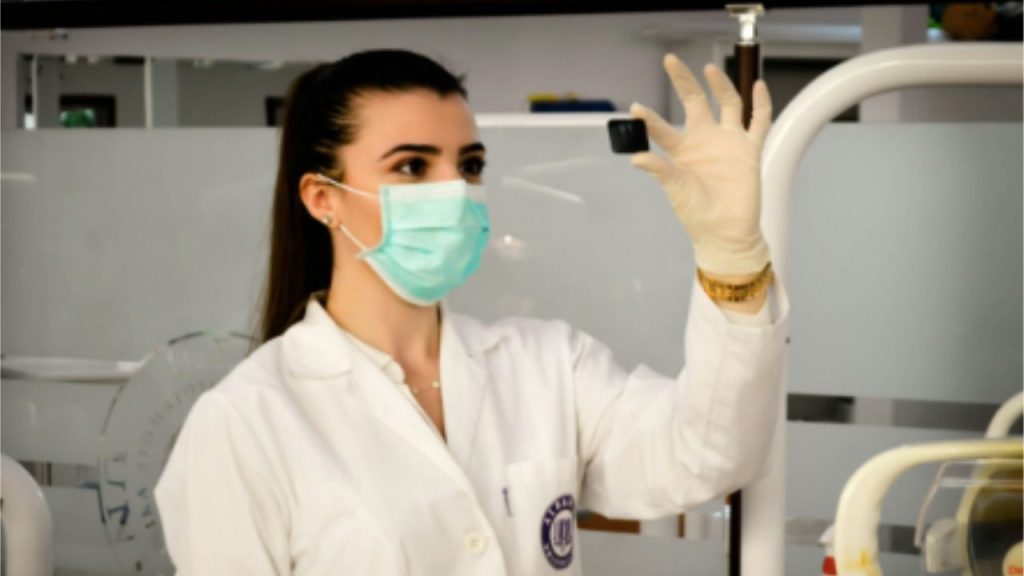Your cart is currently empty!
Benefits & Uses of AI in Disease Analysis

I

The healthcare industry is rapidly evolving, with advancements in technology transforming the way diseases are diagnosed, treated, and managed. Among these innovations, Artificial Intelligence (AI) has emerged as a powerful tool that is reshaping disease analysis. AI systems, through their ability to analyze vast amounts of data and identify patterns, are playing an increasingly vital role in improving the accuracy and efficiency of disease diagnosis. In this article, we will explore the benefits and various uses of AI in disease analysis, highlighting its potential to revolutionize healthcare.
1. Improved Diagnostic Accuracy
One of the most significant benefits of AI in disease analysis is its ability to improve diagnostic accuracy. Traditional diagnostic methods often rely on a clinician’s experience and intuition, which can sometimes lead to misdiagnosis or delayed diagnosis. AI-powered tools, such as machine learning algorithms, can analyze medical images, test results, and patient histories at a much faster rate, identifying patterns that may be invisible to the human eye.
For example, in radiology, AI has been successfully used to detect conditions like cancer, pneumonia, and fractures from medical images like X-rays, CT scans, and MRIs. By training AI models with vast datasets of medical images, these systems can learn to recognize the subtle patterns that indicate the presence of disease. The result is a more accurate and timely diagnosis, potentially saving lives and reducing the margin of error in clinical decision-making.
2. Early Detection of Diseases
AI plays a pivotal role in the early detection of diseases, allowing for interventions at the earliest possible stage. Early diagnosis is often crucial in improving the prognosis of various diseases, including cancer, cardiovascular conditions, and neurodegenerative diseases. AI systems can sift through large volumes of patient data, including medical histories, genetic information, and lifestyle factors, to identify individuals who may be at higher risk of developing certain conditions.
For instance, AI models have been employed in screening for breast cancer through mammograms, where the system is trained to identify early signs of cancer that might not be visible to the human eye. By identifying high-risk patients early, healthcare providers can initiate preventive measures or begin treatment sooner, improving patient outcomes and potentially saving lives.
3. Personalized Treatment Plans
AI is also transforming the way personalized treatment plans are created for patients. In traditional healthcare, treatment decisions are often based on general guidelines or a physician’s experience. However, AI systems can analyze individual patient data — including genetic makeup, lifestyle, and medical history — to develop customized treatment strategies that are more likely to be effective for that specific patient.
For example, AI is used in precision medicine, particularly in oncology, where it can predict how a patient will respond to a particular treatment based on their genetic profile. By analyzing large datasets of clinical records, AI models can help identify the most promising treatment options, reducing the trial-and-error approach traditionally used in medicine. This personalized approach not only improves the likelihood of treatment success but also reduces the risk of adverse side effects.
4. Predictive Analytics for Disease Outbreaks
AI is also being used in predictive analytics to forecast disease outbreaks and track the spread of infectious diseases. By analyzing data from various sources, including health records, social media, and historical outbreak information, AI models can predict the likelihood of disease outbreaks and even track real-time trends in disease spread.
For instance, AI has been used in the early detection of infectious diseases like COVID-19. AI systems were able to analyze a range of data, including news reports, social media posts, and search engine trends, to identify potential outbreaks before they were widely recognized. This capability helps public health officials respond more quickly to emerging threats, allocate resources more effectively, and implement containment measures to reduce the spread of diseases.
5. Enhanced Drug Discovery and Development
The process of developing new drugs is lengthy, expensive, and fraught with uncertainty. AI is revolutionizing drug discovery by enabling faster and more efficient identification of potential drug candidates. AI algorithms can analyze vast chemical databases and predict the efficacy of various compounds in treating specific diseases. By simulating how a drug will interact with the human body, AI can help identify promising candidates much faster than traditional methods.
AI is also being used to analyze genetic and molecular data to identify new biomarkers that can lead to more effective treatments. In the context of disease analysis, AI helps in pinpointing potential genetic causes of diseases, which can guide the development of targeted therapies. By speeding up the drug discovery process, AI can reduce the time it takes for new treatments to reach the market and improve outcomes for patients with conditions that currently have limited treatment options.
6. Real-time Monitoring and Disease Progression
AI technologies are also being utilized for real-time disease monitoring, particularly in chronic conditions such as diabetes, heart disease, and neurodegenerative disorders. Wearable devices and sensors that collect real-time health data can be integrated with AI systems, allowing for continuous monitoring of a patient’s condition. AI can analyze this data and provide early warnings if there are any signs of disease progression or complications.
For example, in diabetes management, AI-powered apps can track a patient’s blood glucose levels and provide personalized recommendations for diet, exercise, and medication adjustments. Similarly, in cardiovascular health, AI algorithms can analyze heart rate, blood pressure, and activity levels to detect early signs of heart disease or stroke, enabling timely interventions to prevent adverse events.
7. Automation of Administrative Tasks
Beyond disease analysis, AI is also making an impact in the administrative aspects of healthcare. By automating routine tasks such as data entry, billing, and scheduling, AI frees up healthcare professionals to focus more on patient care. Automation reduces the likelihood of human error and improves the efficiency of healthcare systems.
This can have a direct impact on disease analysis, as healthcare providers can spend more time analyzing patient data and less time on administrative work. The overall improvement in workflow efficiency means that healthcare teams can respond to patient needs faster, ultimately leading to better diagnosis and treatment.
8. Cost-Effective Healthcare
AI can also help make healthcare more cost-effective. By improving diagnostic accuracy and reducing the need for unnecessary tests and procedures, AI systems can help lower healthcare costs. Furthermore, by predicting diseases early, AI enables preventive measures, reducing the long-term costs associated with treating advanced-stage illnesses.
For example, AI-based disease analysis can reduce the reliance on expensive imaging or invasive diagnostic procedures by identifying potential issues through non-invasive methods, such as blood tests or genetic screening. This makes disease analysis not only more efficient but also more affordable for patients and healthcare systems alike.
Conclusion
The integration of AI in disease analysis is transforming healthcare, making it more accurate, personalized, and efficient. From improving diagnostic accuracy to enabling early disease detection, AI is playing a critical role in enhancing patient outcomes and shaping the future of medicine. As AI technology continues to evolve, it holds the potential to revolutionize disease analysis, providing healthcare professionals with the tools they need to deliver more effective care while improving overall healthcare system efficiency. By embracing AI, the healthcare sector can unlock new possibilities for better, more accessible, and cost-effective disease management.

Leave a Reply